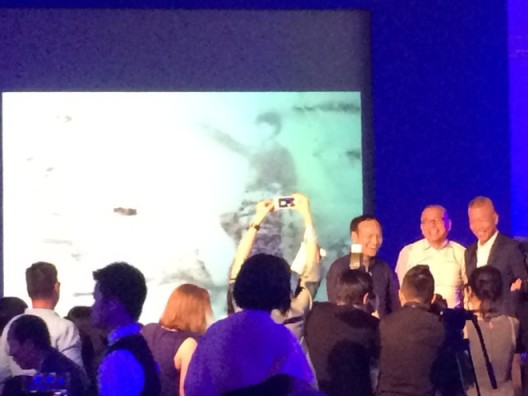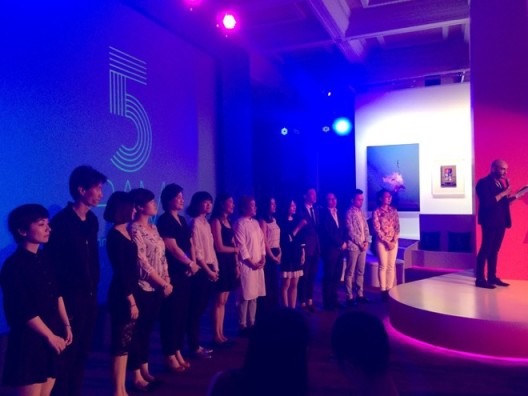2015 marks the fifth anniversary of the founding of Rockbund Art Museum (RAM). The Museum is housed in a classic Art Deco building constructed in the 1930s—originally the Royal Asiatic Society building and the former address of the Shanghai Museum. Prior to the museum’s official opening in May 2010, parallel to that of the Shanghai Expo, with the exhibition “Cai Guoqiang: Peasant da Vincis”, RAM’s first Director Lai Hsiangling had the creative team through three years of preparation; Lai proposed that the museum’s mission should be to “spread humanistic values, and promote art”. This mission continues into the present day with a commitment to creating a brand new “living art space.”
Following renovations by British architect David Chipperfield, the building serves functions of a contemporary museum space while retaining many of the building’s original aesthetic features. These set RAM apart from many of the expansive new museum spaces which have sprung up in China in recent years. In Shanghai alone, the distinctive look of the RAM building and the vertical structure of its exhibition space (which totals over a thousand square meters) combine to affirm its unique character as a museum. As a reflection of this unusual space, nearly every exhibition held there includes site-specific works.
Despite the difficulty of holding public events in Shanghai due to the sheer number of programs competing for attention, over the last five years, RAM has grown its public education programs and audiences, earning a good reputation in this regard. RAM’s exhibitions and overall development are steered by an Advisory Committee made up of individual art professionals and members of prominent art organizations from China and overseas. The current five-year anniversary exhibition, “Chen Zhen: Without going to New York and Paris, life could be internationalized”, for example, was proposed and curated by a committee member, Hou Hanru.
Due to the shortage of government funds allocated to support culture in China, China’s private museums tend to draw on a patronage system (made up of corporate and individual sponsors) similar to that of the United States, rather than relying heavily on government funding like most art organizations in Europe. It seems that an art organization’s only sustainable path for development is to depend on the bartering of power for money on a small or potentially large scale.
On the second evening of the Chen Zhen exhibition the museum hosted a fundraising auction. Donations may include art works given by artists and individual donations from patrons of the museum, of which the former appears to have been the more effective model in recent years. Other institutions for which this has proved a successful approach include Para/Site in Hong Kong and, in Beijing, the Ullens Center for Contemporary Art (UCCA), which often sells tables at an annual Gala to galleries, who in turn invite their collectors.
As a privately sponsored non-profit art organization, RAM’s fundraising activities have only recently begun. On the night of the auction, RAM Director Larys Frogier announced that Qiao Zhibing and Wang Bing as two collectors who have become patrons of the museum through annual sponsorship. (Qiao Zhibing is the founder of the West Bund Oil Tank Art Center soon to be opening in Shanghai; Wang Bing is behind the New Century Art Foundation, which has been very active in recent years). Twelve pieces were donated to be auctioned off during the event, of which nine were donated by artists who have exhibited at RAM. Over 150 guests attended the celebration. The museum has elected not to publicize total funding raised.
In honor of the auction, “5 RAM Anniversary Celebration” was emblazoned in neon lights on the RAM building. Electric blue and pink neon lights cast a violet haze over the entire space. A Master of Ceremonies (rather than a professional auctioneer) invited the museum’s leadership, RAM Advisory Committee members and other industry professionals on stage to introduce the art works and artists to the audience. Introductions were followed by a furious bidding process. Live bids and silent online bids were used during the auction. The first piece up for auction—a gunpowder painting by Cai Guoqiang commissioned by the Bank of Brazil entitled “Dumont”—claimed the highest bid of the evening. Bidding for the work began at 2.16 million RMB; it was appraised at 3.1 million RMB, and sold at 5.16 million RMB. Auction prices increased in increments of 300,000 RMB, while prices for items up that were not auctioned off in front of an audience increased in increments of 5,000 RMB.
If the organizers had had any lingering worries about audience participation, or that their guests might be a peanut gallery of “bystanders” and “onlookers” then the evening’s results must have come as a relief. Such figures suggest the party isn’t quite over for art, but signal also that an era of crowd funding from society’s elite may be drawing near.

